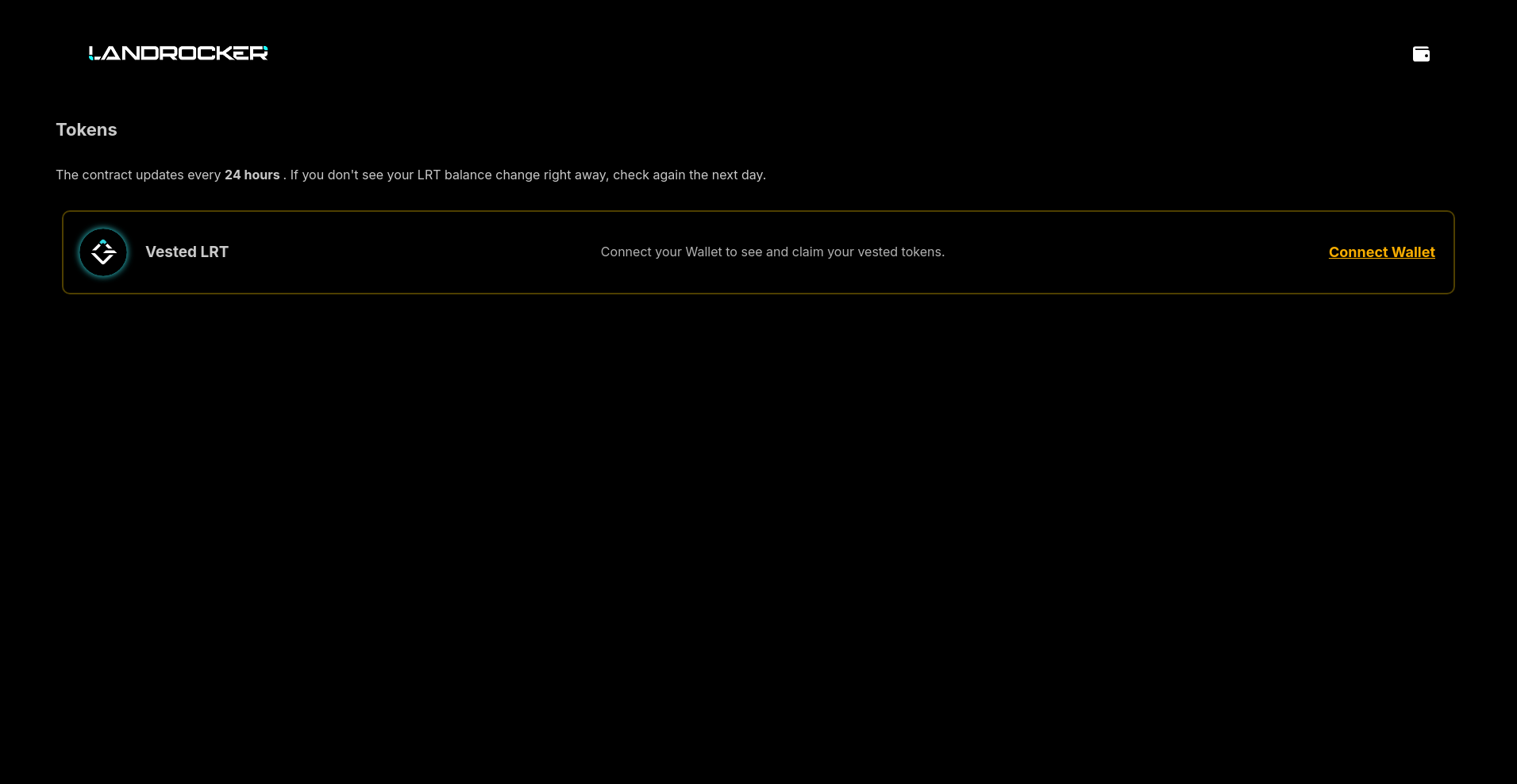LandRocker ($LRT) Review: A Data-Driven Look at Its Legitimacy, Risks, and Potential

What Is LandRocker: An Introduction
LandRocker is a blockchain-based gaming ecosystem that merges space exploration, combat, and play-to-earn mechanics. Built on the MATIC network, the project promises an expansive universe with over 79 quintillion planets, each boasting unique environments, ecosystems, and challenges. The core gameplay involves missions such as space battles, resource gathering, and craft-based activities, all integrated with blockchain to enhance transparency and ownership of in-game assets.
The ecosystem is powered by the LRT token, which is used for purchasing in-game items, staking, crafting NFTs, and participating in competitions. The project's whitepaper emphasizes an evolving storyline and a dynamic player-driven economy, making it attractive to gamers and crypto investors alike. However, this review aims to provide an impartial assessment, exploring its strengths and weaknesses from a legitimacy and risk perspective. Understanding the tokenomics design is crucial for such projects.
The Team and Roadmap Evaluation
Analyzing publicly available information, the LandRocker project has not provided comprehensive details about its founding team. The absence of clear team backgrounds, advisors, or identifiable leadership raises questions regarding credibility. The provided data does include a roadmap with key milestones, but without transparent team credentials, the likelihood of timely and effective delivery remains uncertain. Validating a project's roadmap involves scrutinizing these elements.
- Milestone 1: Development of core gameplay features and initial token deployment.
- Milestone 2: Launch of staking platform and marketplace functionalities.
- Milestone 3: Implementation of dynamic storyline updates and ecosystem expansion.
- Milestone 4: Strategic partnerships and community growth initiatives.
While these milestones suggest a structured plan, the lack of details about the actual team expertise, past achievements, or technological innovations diminishes confidence in the project’s ability to achieve these goals. The credentials of the developers or ecosystem builders are not transparently disclosed, which is a concern for potential investors or users evaluating project legitimacy.
Assessing the Security and Integrity of LandRocker
This section relies primarily on the audit report from Cyberscope, which indicates a security assessment was conducted for the project’s token contract on the MATIC network. The audit report confirms that only the token contract has been reviewed, with a focus on vulnerabilities and code robustness.
- Security Score: 94.90%, indicating a high level of code security and audit scrutiny.
- Vulnerabilities: No critical or high vulnerabilities were identified, suggesting the token contract code is likely free of common exploits.
- Decentralization: Scored at 56, implying some level of central control or owner privileges remain within the system, which could be a point of attack if not properly managed. Understanding a project's level of decentralization is key.
- Audit Scope: Limited to token contract; other system components like marketplace, staking, or gameplay smart contracts appear unevaluated.
Although the high security score appears promising, it is important to recognize that only one audit source was available. The security of the entire ecosystem—especially interactive components such as staking and gameplay smart contracts—remains unverified. For investors, this partial security assessment warrants caution, as vulnerabilities in un-audited parts could introduce risks.
A Breakdown of LandRocker Tokenomics
The economic model of LRT, as per available data, includes features typical of blockchain gaming tokens: utility for in-game purchases, staking rewards, NFT crafting, and marketplace trading. The total token supply details are not explicitly provided, but the publicly available vested tokens imply a vesting schedule designed to control circulating supply.
- Total Supply: Not explicitly stated; circulating supply and vesting details remain unclear.
- Vesting Schedule: Vested tokens are released gradually, with contract updates every 24 hours, suggesting an ongoing unlock process. Token vesting schedules are crucial for stability.
- Distribution: No comprehensive breakdown of team, advisors, early investors, or community allocations is publicly available. The connect wallet interface shows vested tokens, but the exact proportions are not transparent.
- Utility: LRT tokens facilitate in-game purchases, staking, NFT crafting, and trading—aligning with typical play-to-earn economic models.
- Inflation/Deflation Mechanisms: Details are sparse; no buyback or token burn strategies are publicly outlined, raising questions about long-term economic sustainability.
In sum, while LRT provides utility within its ecosystem, the lack of detailed tokenomics documentation and transparent distribution raises potential risks related to inflation, centralized control, or unwarranted token dumps. Investors should consider whether the economic incentives are robust enough to support sustainable growth.
Assessing LandRocker's Development and Ecosystem Activity
Based on recent activity, LandRocker appears to be in its developmental or early launch phase. Surveillance of social media channels shows consistent updates, engagement metrics on Twitter (over 83,000 followers), and active community channels, indicating some level of traction. The security audit, released publicly in mid-2024, suggests formal efforts towards transparency and security.
However, there is limited evidence of substantial product deployment—no detailed gameplay videos, user onboarding metrics, or proven real-world traction beyond community statistics are currently accessible. Much of the narrative remains promotional, emphasizing future potential and strategic partnerships (notably with Microsoft/MatterGen), without concrete rollout events or proven adoption metrics.
This suggests the project is still in a developmental or pre-launch phase with hype building around upcoming releases. Genuine ecosystem traction, such as player engagement, in-game transaction volume, or marketplace activity, remains to be verified.
The Fine Print: Analyzing LandRocker's Terms
The available documentation provides limited legal or terms of service details. There are no evident clauses regarding investor protections, dispute resolution, or governance mechanisms. The project appears to rely heavily on whitepaper and promotional materials that lack explicit legal language.
Potential concerns include:
- Absence of clear dispute resolution or legal recourse for token holders.
- Vague governance structures, possibly allowing owner-centric decision-making.
- Limited transparency about regulatory compliance or adherence to local laws.
While this absence of explicit legal terms introduces a risk factor, such issues are common in early-stage crypto projects. Nevertheless, investors should scrutinize the project's legal disclosures and assess whether additional safeguards are in place for their investment.
Final Analysis: The Investment Case for LandRocker
LandRocker presents an ambitious vision of a vast, blockchain-powered gaming universe with extensive gameplay, exploration, and community features. Its integration of blockchain technology, a seemingly secure token contract, and active community engagement are positives. However, several risks temper optimism:
- Lack of transparent team information diminishes credibility and raises concerns over project execution.
- Security review limited to token contract leaves critical ecosystem components unvetted.
- Insufficient detailed tokenomics and distribution transparency could impact long-term sustainability.
- Dependence on future developments and hype makes current valuation speculative.
Overall, LandRocker resembles an early-stage project with promising technological and strategic intentions but lacking the full transparency and security assurances necessary for confident investment. Proceed with caution, and consider its developmental status, audit scope, team clarity, and economic robustness before engagement.
As always, potential investors are advised to perform independent due diligence and remain aware of the inherent risks within the volatile crypto gaming sector.

Sarah Wilson
Offensive Security Engineer
I'm a professional "white-hat" hacker. I think like an adversary to find holes in crypto projects before the bad guys do. My job is to break things so you don't get broken.